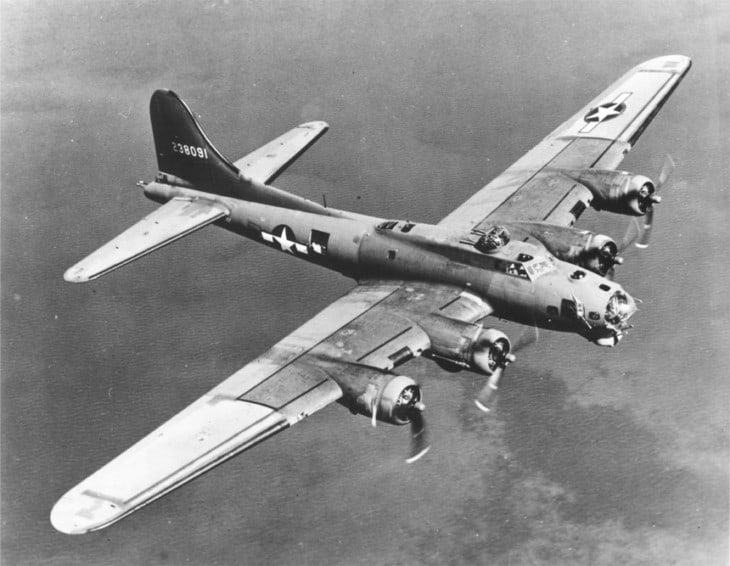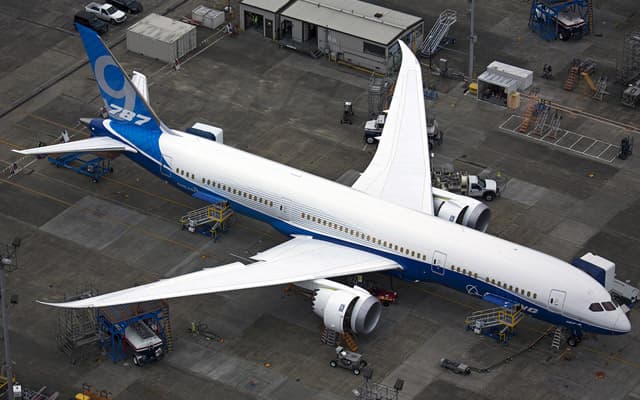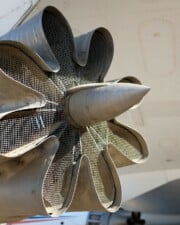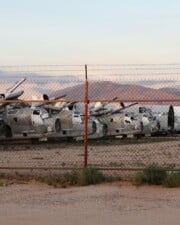Like car, truck, or computer manufacturers, airplane makers struggle to come up with a recognizable brand for their products. Boeing has been incredibly successful at doing this since they carved out a niche in the passenger jet market in the 1960s. Today, Boeing planes are recognizable the world over just by the mention of their three-number identifiers. But why did Boeing choose 7 for their passenger jets?
Since its first successful jet airliner, Boeing has begun all of its commercial jet aircraft with the number seven. Why? It was decided that jet airliners would be a new series of aircraft, and the 700-series was chosen. Since the successful 707, Boeing planes have been known for their distinctive 7×7 numbering system. One of the reasons is that it has a nice ring to it… Read on for the full story.
History of Boeing Commercial Airliners
Boeing has not always used the same numbering system for their planes. Back when the company was founded, their first plane was simply the Boeing Model 1, also known as the B&W Seaplane.
Over the years, other highly successful or well-known Boeing models included the 247 and the 314. The first pressurized airliner was the 307 Stratoliner, which was later replaced by the 377 Stratocruiser. The Boeing Model 367-80 was the prototype of what would later be named the 707.
It’s also important to note that the Boeing company made more than just airliners. While they had a few successes in the passenger air business, most of the company’s reputation was built on their military aircraft’s successes. The B-17 Flying Fortress (Boeing Model 299) and B-29 Superfortress (Model 345) heavy bombers had helped secure a victory for the Allied Forces in WWII.

Boeing designers have always used various parts of successful aircraft to make new ones. When they designed the 707, they used design elements from the B-52 Stratofortress (Model 454).
Boeing Numbering System
Why do Boeing models start with 7?
According to Travelweek, Boeing was restructured after World War II, and each department of the organization was given a three-digit number. 300 and 400s were still aircraft, 500s were turbine engines, 600s were for rockets and missiles, and 700s were designated for turbine transports.
It was believed that Model 700 sounded a little boring, and since previous models had been the 247 and 307 respectively, 707 seemed a logical choice. Plus, it had a nice ring to it.
Boeing has remained with its numbering system since the 707, except the short-lived 720. All names but the 797 have been taken.
Boeing airliners are further classified by their model variants with a three-digit code after the model number. For example, the 747-400 was a long-range and extended body variant of the original 747-100.
Additionally, Boeing has always numbered their aircraft even more correctly based on the ordering customer. For example, Pan American Airways had been given a code of “21.” So a 747-100 ordered by Pan American would be given the designation 747-121.
Overview of Boeing Jet Airliners
707
Boeing’s first jet airliner was also the world’s first successful attempt. The 707 (“seven-oh-seven”) design benefitted from lessons learned from the De Havilland Comet, and its biggest competitor was the Douglas DC-8. It was a medium to long-range quad jet that seated just under four passengers. A modified version was called the 720.
727
The 727 was designed after the success of the 707 when airlines request a jet optimized for short-range trips. The three-engine “trident” configuration had all engines on the T-tail. They entered service in 1964.
737
The 737 is still in production, and it is the most popular jet airliner ever built in terms of deliveries. It is a narrow-bodied short to medium range twin-jet airliner. Equipped initially with turbojet engines, the newest 737-MAX models are some of the most efficient and technically advanced planes in the sky. Its current main competitor is the Airbus A320-family aircraft.
747
The 747 was the world’s first wide-bodied jetliner. The quad jet plane features a distinctive upper deck hump that was initially designed to allow the forward section of the main deck to open for cargo loading. The 747 is still in production as the 747-8I and -8F models, and they are used for long-haul flights all around the world.

757
This narrow-bodied jet was designed to replace the aging 727. It filled the need for short to medium-haul flights and went into service in the early 1980s.
767
The wide-bodied 767 was designed alongside the 757. They use many common parts and have a common type rating to reduce pilot training costs.
777
The wide-bodied 777 (“triple seven”)is the largest twin-jet ever built, and it was designed to help airlines take advantage of the relaxation of rules relating to extended operations over water for twin-jet planes.
Airlines were using the 767 for extended overwater operations more and more since it was so much cheaper to operate than the quad jet 747. The 777 looks like a bigger 767. It was designed to replace aging L-1011s and DC-10s, and it fills the market gap between the smaller 767 and the larger 747.
787
The Dreamliner is Boeings newest design–it’s a wide-bodied jet with many new production techniques and many composite plastic components. It burns about 20 percent less fuel than a comparable 767. It entered service in 2011.
797 (Proposed)
The next new design from Boeing will undoubtedly be named the 797, but what will it look like? Initial reports from the company indicate that their next big project is likely to be what they call the “New Midsize Airplane.”
It’s been proposed since 2015, and it will likely be a replacement for the 757. This plane will likely be delayed as Boeing reworks the 737-MAX, and the industry restructures for a post-pandemic economy.
Wait, Where’s the 717?
The designation 717 has been used twice by Boeing, but it didn’t stick for one reason or another. According to Boeing Frontiers, when the company first made the 707, it designated the military tanker version of the aircraft as Model 717. It’s official military designation stuck better, though. The KC-135 is still in service today.
After that, Boeing decided to use the 700-series number exclusively for commercial jetliners.
The second use of the 717 came after Boeing and McDonnell-Douglas merged. The MD-95 was still in production and was for a short while known as the Boeing 717.
Related Posts
















